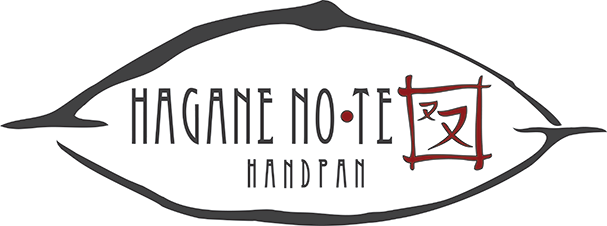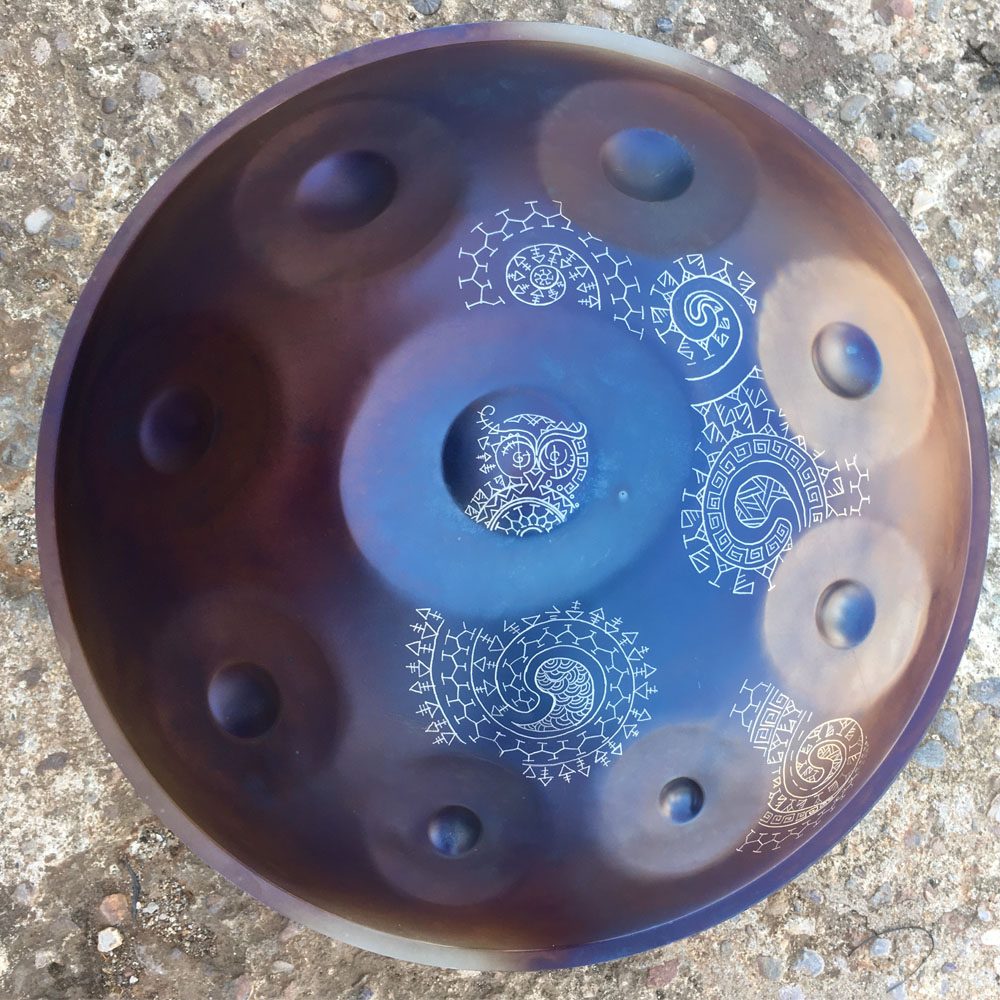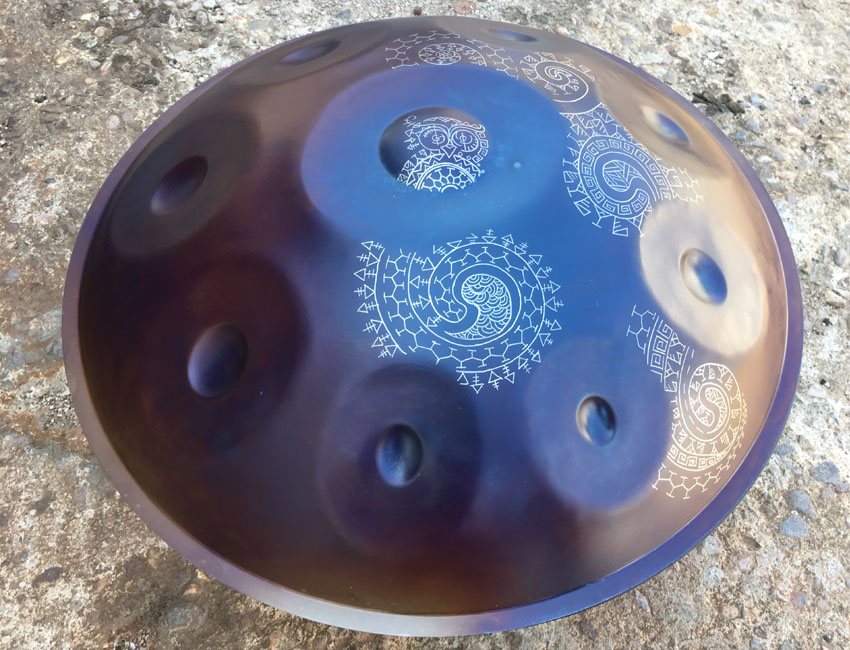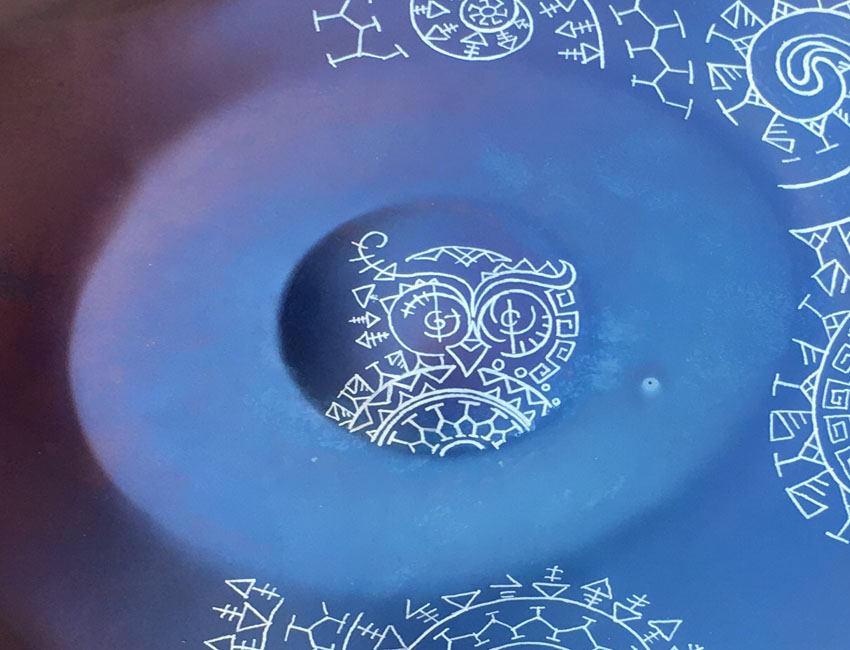Akebono
Click here to try the HaganeNote Handpan Virtual Instrument
The Akebono handpan scale is a pentatonic scale obtained from the traditional Japanese diatonic scale In. The ethnomusicologist Fumio Koizumi explains how Japanese pentatonic scales can be interpreted as formed by two sets of three notes (repeating the tonic in the upper octave).
The pentatonic scale resulting from the In is the miyako-bushi scale, and it is used in traditional Japanese instruments such as the koto and the shamisen. The miyako-bushi scale is the scale of the handpan Akebono family, and it is composed by two groups featuring the following degree structure:
First group: 1 – b2 – 4
Second group: 5 – b6 – 1
Such note groups are characterized by minor-second intervals between the first and the second note of the group, and a perfect fourth between the first and the last note in the group. In some interpretations, the miyako-bushi scale is considered as a mode of the Japanese Hirajoshi scale.
In this handpan version, the ding is the root of the scale, followed by the fourth and the fifth, defining the limits of the two three-note groups and introducing its mood. The result is a deep and hypnotic scale, an introspective immersion in the oriental sound of this music scale.
– D/ G A Bb D Eb G A Bb *
– E/ A B C E F A B C *
– F/ Bb C Db F Gb Bb C Db *
* The 8 notes version is also available, please contact us for more information
Scale List
Check our Handpan Scale Comparison Page to listen to all the audio samples and find the scale you love!
https://en.wikipedia.org/wiki/In_scale
https://en.wikipedia.org/wiki/Hiraj%C5%8Dshi_scale
Youtube video by MusicTheoryForGuitar: The Simple Theory Of Japanese Music Scales [Pentatonics, Guitar]



